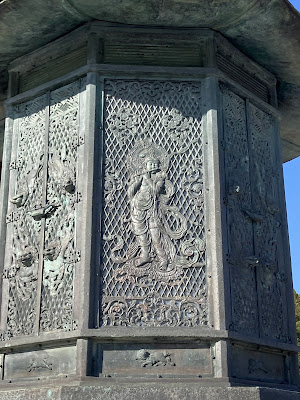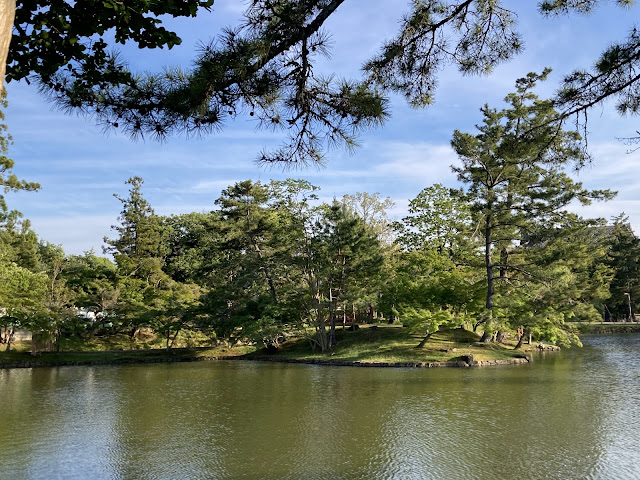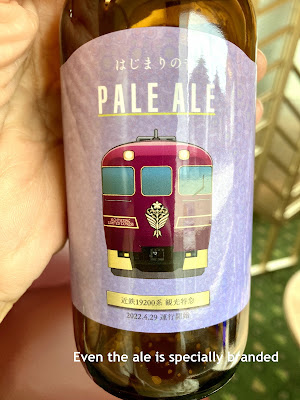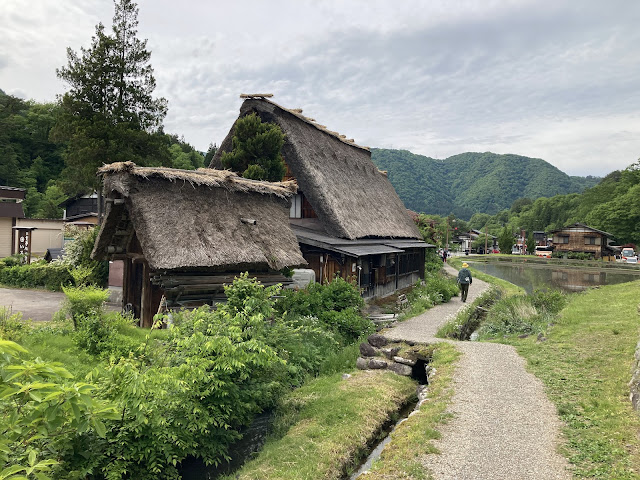Nara is a beautiful city, as I recalled it from 50 years ago when I had been there. We had planned on spending two full days but due to the sudden availability of a temple inn stay at Koyasan, we cut it to one day.
We arrived from Koyasan via cable car to Gokurakubashi and train
to Namba Nankai. The train journey was through a lot of wooded countryside.
Very pretty
We were met by a Japanese friend of mine –
Masahirosan - whom I had met a few years ago in Ahmedabad and Mumbai. He is a
gentle soul who speaks excellent English. He wanted to ensure we did not get
lost; hence he met us at Namba and we took the train to Nara and checked into
the Nikko Nara which is right above the rail station. I thought it would be
ideal for the next day’s train to Kyoto; unaware that the Anoyoshi Tourist
Express left from another station quite faraway!!
At Kyoto and other stations, we saw many school groups – all the kids very orderly and disciplined. Well dressed
After a miserable pizza lunch in the worst possible Pizza Hut, we went to Todaiji Temple; also known as the deer park temple as there are numerous herds of deer in the park premises often nudging tourists for food!! They are rather cute and the horns of the young deer are soft and fuzzy. The whole park was teeming with school children enjoying themselves.
My son and one nephew were fascinated with
the deer and could not resist touching their furry bodies – they had
never seen deer up so close nor had they touched deer before. I wonder what
they will feel when they touch a reindeer – its fur is soooo soft that you feel
like cuddling the whole animal – as I experienced in the Arctic Circle near Rovaniemi,
Finland.

They represent the Nio
Guardian Kings. The statues are designated national treasures together with the
gate itself. They tower over you and are really fierce.
The temple was constructed
in 752 as the head temple of all provincial Buddhist temples of Japan and grew so
powerful that the capital was moved away from Nara in 784 to lower the temple's influence on
government affairs.
Daibutsuden Hall is Todaiji Temple's main hall. A large wooden building, which had two great fires before being rebuilt again in 1709. It was originally 88 meters in length, but was scaled down in the process of rebuilding and now stands at 57 meters.
Until
recently, Todaiji's main hall, the Daibutsuden (Big Buddha Hall), held the record as the world's
largest wooden building, despite the fact that the present reconstruction of
1692 is only two thirds of the original temple hall's size. The massive
building houses one of Japan's largest bronze statues of Lord Buddha (Daibutsu).
Nara's main attraction is its Daibutsu (Great Buddha), one of
the largest bronze statues in the world. It was unveiled in 752, upon the
completion of the Daibutsu-den
Great Buddha Hall. Both have been damaged over the years; the present statue
was recast in the Edo period.
The Daibutsu stands just over 16m high and
consists of 437 tonnes of bronze and 130 kg of gold. It is an image of Dainichi
Nyorai (also known as Vairocana Buddha), the cosmic Buddha believed to give
rise to all worlds and their respective Buddhas. Historians believe that
Emperor Shōmu ordered the building of the Buddha as a charm against smallpox,
which ravaged Japan in preceding years. Over the centuries the statue took
quite a beating from earthquakes and fires, losing its head a couple of times
(note the slight difference in colour between the head and the body).
Near the exit of the temple, there are souvenir and lucky charms shops. Japanese are big on good luck charms. Also as is usually the case in any tourist location, there is a counter where the artist does a chop for you on a sheet of paper or in your special chop book.
These
are very artistic. The book covers are beautifully designed and printed and I purchased
one; which regrettably was used only once as I forgot to carry it. But I did
get the chop made at various places and then affixed them in my book. It makes
a wonderful memento even though I can’t read the writing!
After leaving the temple and as you proceed
from the garden towards the exit gate, you come across this display featuring
the precautions taken for an earthquake.
At Nara, we were actually staying at an hotel above the station. We did not know that the special new Aoniyoshi Tourist train left from another station. So, it was a real shock to maneuver our heavy suitcases across streets and large city squares. It was a good 15 - 20 minutes away and we could not find a single cab. We were really running at the end. Minutes to go. We found the station, the entry, then asking the station ticket inspector - we were told to buy platform tickets!! The inspector messaged the train staffer that some pax were running late! A lady staffer came with us, helped pour our loose change into the machine, get the tickets, ran downs the stairs to the platform at the next level. She indicated by hand signal to the door inspector that we were coming in. We literally threw our bags in and piled into the vestibule and the train left!! That was the closest I ever came to missing a train ! But it was due to the superb coordination and help of the Station staff that we caught it.
We arrived into Kyoto for a few days more of sight seeing.

























































